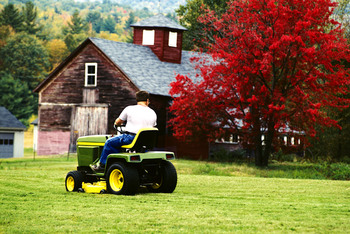Fall Seeding & Fertilizing
Posted on September 2, 2014

Contrary to popular opinion, fall is the best time of the year for lawn care. Fertilization, weed and thatch control, establishment of new lawns, and renovation of poor quality lawns should be done over the next few weeks.
Seeding in the Fall
Your most successful seeding time is right around Labor Day. Seeding 2 weeks before or after that easy-to-remember holiday gives your new seedlings time to build strong roots. Reseeding in the fall gives you a thick, lush lawn at the start of spring. One that easily fends off weeds and stands up to summer stress. In fact, overseeding with grass seed and fertilizer in the fall can make your lawn up to 49% thicker next spring!
Fertilizing in the Fall
Fall conditions are great for lawns. Grass roots start to store nutrients the grass will need when it wakes up again in the spring. So you want to help those roots grow by fertilizing. Your best bet is to feed once in early fall (if you are overseeding, your starter fertilizer counts) and once more about 6 to 8 weeks later, around Thanksgiving. Deliver the nutrients grass needs to get through the winter and come up strong the following year.
Promote winter hardiness for quicker spring green-up with Bonide DuraTurf Winterizer. A slow release, phosphate-free fertilizer. Help roots store energy for new spring growth with iron for deep greening.
If your lawn is displaying compaction and the presence of moss plants, both are signs of soil acidity. Grass likes a neutral soil pH. You can solve this problem by liming your soil with pelletized or granulated lime. If your lawn has been doing fine and shows no signs of suffering from acidity, don't apply lime. Liming is only a corrective measure, not a preventive measure.
Blog Archives
- January 2020
- December 2019
- November 2019
- October 2019
- September 2019
- August 2019
- July 2019
- June 2019
- May 2019
- April 2019
- March 2019
- January 2019
- December 2018
- September 2018
- July 2018
- May 2018
- April 2018
- January 2018
- December 2017
- November 2017
- October 2017
- August 2017
- June 2017
- March 2017
- February 2017
- January 2017
- December 2016
- November 2016
- September 2016
- August 2016
- July 2016
- January 2016
- November 2015
- October 2015
- January 2015
- October 2014
- September 2014
- August 2014